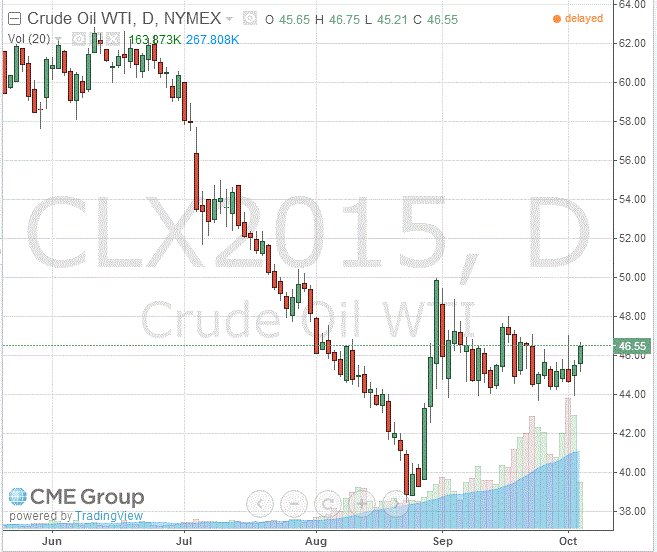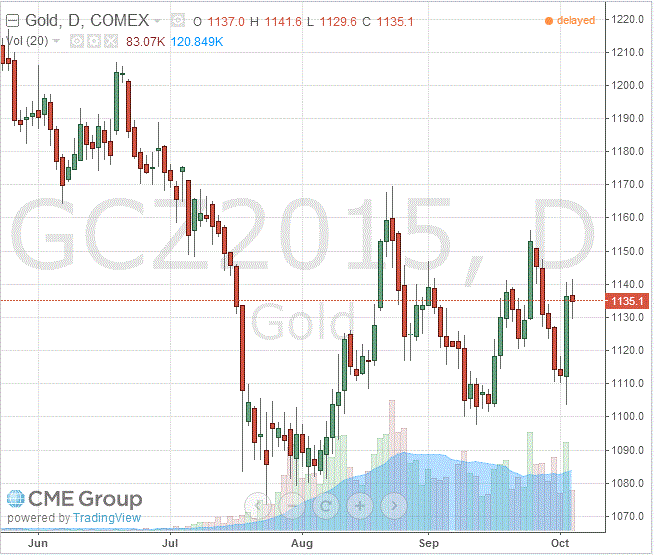Noticias del mercado
-
17:48
Oil prices rise on comments by Russian Energy Minister Alexander Novak
Oil prices increased on comments by Russian Energy Minister Alexander Novak. He said on Saturday that Russia is ready to talks with the Organization of Petroleum-Exporting Countries (OPEC) to discuss oil prices. Novak added that Russia and Saudi Arabia planned a meeting for the end of the month.
Russian Finance Minister Anton Siluanov said on Friday that oil prices will not recover as fast as after the financial crisis in 2008-2009. He pointed that the ministry expect the oil price to be at $50 per barrel in 2016 and $52 per barrel in 2017.
A decline in U.S. oil rigs also supported oil prices. The oil driller Baker Hughes reported on Friday that the number of active U.S. rigs declined by 26 rigs to 614 last week. It was the fifth consecutive decrease and the biggest weekly fall since the week ending April 24, 2015.
Combined oil and gas rigs fell by 29 to 809.
Oil prices were also supported by concerns over the escalation of the conflict in Syria. Russia started air strikes against Islamic State targets in Syria on last Wednesday.
WTI crude oil for November delivery rose to $46.55 a barrel on the New York Mercantile Exchange.
Brent crude oil for November climbed to $49.70 a barrel on ICE Futures Europe.
-
17:29
Gold price declines, consolidating after Friday’s significant increase
Gold price declined, consolidating after Friday's significant increase. Gold price rose on Friday on speculation that the Fed will delay its interest rate hike after the release of the weak U.S. labour market data. According to the U.S. Labor Department, the U.S. economy added 142,000 jobs in September, missing expectations for a rise of 203,000 jobs, after a gain of 136,000 jobs in August. The U.S. unemployment rate remained unchanged at 5.1% in September, in line with expectations. It was the lowest level since April 2008.
Gold is traded in U.S. dollars. It suffers when the U.S. dollar strengthens, becoming more expensive for holders of other currencies.
December futures for gold on the COMEX today decreased to 1135.10 dollars per ounce.
-
10:36
The number of active U.S. rigs declines by 26 rigs to 614 last week
The oil driller Baker Hughes reported on Friday that the number of active U.S. rigs declined by 26 rigs to 614 last week. It was the fifth consecutive decrease and the biggest weekly fall since the week ending April 24, 2015.
Combined oil and gas rigs fell by 29 to 809.
-
10:24
Saudi Arabia lowers prices for November oil sales to Asia and the U.S.
Saudi Arabia lowered prices for November oil sales to Asia and the U.S. as the country tries to protect market share despite falling oil prices. The state-owned Saudi Aramco cut the Arab Light crude oil price to Asia by $1.70 a barrel. The company also lowered its Heavy crude oil price by $ 2 a barrel for the Far East, and by $0.30 a barrel for the United States.
Saudi Arabia decided to lower its selling prices after Iran, Iraq and other countries in the Middle East cut its prices the last month.
-
09:00
Oil prices rose
West Texas Intermediate futures for November delivery rose to $45.87 (+0.72%), while Brent crude advanced to $48.52 (+0.81%) amid Russia's willingness to discuss oil markets with OPEC and non-OPEC producers. Tensions in Syria also affect crude prices.
Meanwhile Saudi Arabia's state oil company Saudi Aramco cut prices for Asian customers by $1.7 per barrel. Oil shipped to the U.S. got 30 cents cheaper. This decision was announced on Sunday. Last month Iran and Iraq took similar steps.
-
08:47
Gold retreated after Friday's jump
Gold retreated to $1,134.10 (-0.22%) after its 2.2% Friday rally generated by a weaker-than-expected U.S. employment report. U.S. economy created 142,000 jobs in September compared to the expected 200,000.The unemployment rate remained at 5.1%. This report suggested that the Federal Reserve might postpone a data-determined rate hike.
September was the second straight month of relatively slower job creation. Investors are concerned that China's economic slowdown might have affected the U.S.
-
00:31
Commodities. Daily history for Sep Oct 2 ’2015:
(raw materials / closing price /% change)
Oil 45.66 +0.26%
Gold 1,137.60 +0.09%
-


